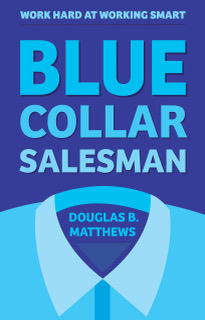Concussions in Sports
Concussions in Sports: A Comprehensive Look at Their History, Impact, and Future
Concussions in sports have become a growing concern in recent years. Once regarded as minor injuries, concussions are now seen as serious events that can have long-term consequences. Athletes, both amateur and professional, are at risk of sustaining concussions. The issue has gained increased attention due to the severe effects on health, performance, and overall quality of life. As sports organizations across the world grapple with the problem, solutions are emerging in the form of stricter protocols and advanced protective gear.
A Brief History of Concussions in Sports
The history of concussions in sports is long and often overlooked. For many years, head injuries were simply part of the game, particularly in contact sports like football, boxing, and hockey. Early sports physicians and trainers did not fully understand the long-term dangers associated with concussions. In the early 20th century, concussions were considered “getting your bell rung.” Players were often encouraged to shake it off and return to the game, a practice that now seems dangerously outdated.
In the 1970s and 1980s, research began to reveal the potential dangers of repeated concussions. However, it wasn’t until the 1990s and 2000s that the issue truly gained traction. High-profile cases, particularly in American football, brought widespread attention to the dangers. Athletes like Muhammad Ali and Mike Webster highlighted the link between concussions and severe brain damage later in life. As research progressed, experts established that concussions could result in chronic traumatic encephalopathy (CTE), a degenerative brain disease. This knowledge spurred changes in concussion protocols, but the evolution of safety measures was slow.
Sports Most Impacted by Concussions
Certain sports see a higher rate of concussions due to the nature of play. Contact sports like football, soccer, rugby, ice hockey, and boxing are at the top of this list. However, non-contact sports are not immune to concussion risks either.
1. Football
Football, particularly American football, leads the way in concussion statistics. The game involves repeated collisions, often between players moving at high speeds. Tackling, blocking, and even incidental collisions between teammates can result in head injuries. The National Football League (NFL) has faced numerous lawsuits from former players, some of whom developed CTE after years of play. The NFL has implemented changes in recent years, including stricter protocols and penalties for dangerous hits, but concussions remain a persistent issue.
2. Soccer
While soccer is typically considered a low-contact sport, concussions are surprisingly common. Heading the ball can lead to a concussion if the player strikes the ball improperly or makes contact with another player. In addition, accidental collisions between players during tackles or jumps are frequent causes of concussions in soccer. Female soccer players, in particular, have been found to have a higher rate of concussions compared to their male counterparts.
3. Ice Hockey
Ice hockey combines high-speed play, physical contact, and a hard playing surface, all contributing to an increased risk of concussions. Hits to the head, body checks, and accidental falls are the primary causes of head injuries. The National Hockey League (NHL) has also been involved in concussion-related controversies, with several former players developing CTE symptoms after retirement.
4. Rugby
Rugby is another high-contact sport where concussions are prevalent. With no protective headgear and the frequent physicality of scrums, tackles, and rucks, players often sustain concussions. Studies have shown that rugby players, like football players, may face long-term brain health issues from repeated concussions.
5. Boxing and MMA
In combat sports like boxing and mixed martial arts (MMA), concussions are almost a given. The very nature of these sports involves strikes to the head. Repeated blows can cause concussions, sometimes leading to severe brain injuries. The careers of many athletes, including legends like Muhammad Ali, have been marred by brain trauma due to years of concussive blows.
Concussions in Amateur Sports
The issue of concussions is not limited to professional athletes. Amateur sports, including youth leagues, high school, and college-level play, are all affected by the risks. In fact, many young athletes are more vulnerable to the long-term effects of concussions because their brains are still developing.
Youth and High School Sports
Concussions in youth and high school sports are a growing concern. Football, soccer, and hockey are the primary culprits, but even non-contact sports like basketball and baseball have seen concussion incidents. The challenge is twofold. First, many young athletes are eager to return to play after an injury, often downplaying the severity of their symptoms. Second, there is a lack of trained medical personnel, such as athletic trainers, available at youth sporting events. This has led to a push for better education for coaches, parents, and athletes about the risks of concussions.
College Sports
At the collegiate level, athletes face increased risks due to the higher level of competition. NCAA sports, particularly football and basketball, have introduced protocols for dealing with concussions, but compliance can vary across schools. College athletes are also prone to pressure from coaches and teammates to return to the game prematurely, leading to recurring head injuries. The NCAA has implemented concussion management policies, but some critics argue that they do not go far enough to protect athletes.
Concussions in Professional Sports
Professional sports organizations have started to recognize the dangers of concussions and are implementing changes to better protect athletes. However, the financial incentives in pro sports can complicate efforts.
NFL
The NFL has been at the forefront of the concussion debate. After years of lawsuits and research linking concussions to CTE, the league implemented stricter concussion protocols. Players suspected of having a concussion are removed from the game and cannot return until cleared by medical professionals. In addition, the NFL has introduced rule changes designed to minimize dangerous hits, such as penalizing helmet-to-helmet contact. Despite these efforts, the issue persists, and many retired players continue to experience brain-related health problems.
NHL
The NHL has also faced legal battles over concussions. Like the NFL, the NHL has instituted concussion protocols, including baseline testing for players at the start of the season. Players suspected of having a concussion must pass a series of tests before they can return to play. Nevertheless, high-profile cases of CTE among former hockey players have raised concerns about the effectiveness of these measures.
Other Professional Leagues
Other professional leagues, such as Major League Soccer (MLS) and rugby leagues around the world, have followed suit with concussion protocols. However, enforcement of these protocols can vary, and athletes still feel pressure to return to play quickly.
Health Consequences of Concussions
The short-term effects of concussions can include headaches, dizziness, confusion, and memory loss. However, the long-term consequences are far more troubling. Repeated concussions can lead to CTE, a progressive degenerative disease that affects brain function. Symptoms of CTE include memory loss, confusion, depression, and even suicidal tendencies. Other potential long-term effects include cognitive decline, early onset dementia, and motor function issues.
Recent studies have also shown that even sub-concussive hits — blows to the head that do not result in a diagnosed concussion — can contribute to brain damage over time. This has raised concerns about the cumulative effects of even minor head injuries.
Dealing with Concussions in the Future
As the dangers of concussions become more widely known, sports organizations, scientists, and equipment manufacturers are searching for ways to reduce the risks.
Improved Protocols
Many sports organizations have implemented concussion protocols, but future changes will likely include more stringent measures. This could involve mandatory sit-out periods for athletes who suffer a concussion, regardless of whether they are cleared by medical professionals. Additionally, better diagnostic tools, such as advanced brain imaging and blood tests, may help in detecting concussions more accurately.
Advanced Protective Gear
One of the most promising areas of development is the improvement of protective gear. Helmet technology, for example, has advanced significantly in recent years. Modern football helmets are designed to absorb more impact, reducing the force transmitted to the brain. Some helmet manufacturers are also experimenting with sensors that can detect the severity of impacts during play, alerting medical staff if a player may have suffered a concussion.
In soccer, discussions have centered around introducing padded headgear for players who frequently head the ball. While some studies suggest that padded headgear can reduce the risk of concussion, its widespread adoption remains a point of debate. Similarly, hockey leagues are exploring helmets and mouthguards with built-in technology to monitor impacts.
Rule Changes
In addition to improved protective gear, rule changes will likely continue to evolve. Many leagues have already banned dangerous plays, such as helmet-to-helmet hits in football. Future rule changes could further restrict the types of contact allowed during play. In sports like rugby, where head injuries are common, some have called for changes to tackling techniques or even limiting the amount of contact allowed in training sessions.
Education and Awareness
Perhaps the most important tool in combating concussions is education. Athletes, coaches, and parents need to be fully aware of the dangers of concussions and how to recognize the signs. Sports organizations are increasingly focusing on education initiatives aimed at preventing concussions. This includes teaching proper techniques for tackling or heading the ball, as well as educating players on the importance of reporting symptoms.
Better Post-Career Support
For athletes who have suffered multiple concussions, better post-career support is essential. This could include routine neurological check-ups, mental health support, and financial assistance for those dealing with the long-term effects of concussions. Organizations like the NFL Players Association have begun offering more comprehensive post-career medical care, but more needs to be done across all sports.
Conclusion
Concussions in sports are a serious issue with far-reaching consequences. The growing awareness of the dangers, particularly in high-contact sports like football, soccer, and hockey, has led to significant changes in how these injuries are treated. While progress has been made in both amateur and professional sports, more needs to be done. Improvements in concussion protocols, protective gear, and player education will continue to evolve. Addressing the problem of concussions in sports is a complex task, but one that will protect future generations of athletes from unnecessary brain trauma. As we move forward, the key will be to balance the passion and competitiveness of sports with the safety and health of athletes.






